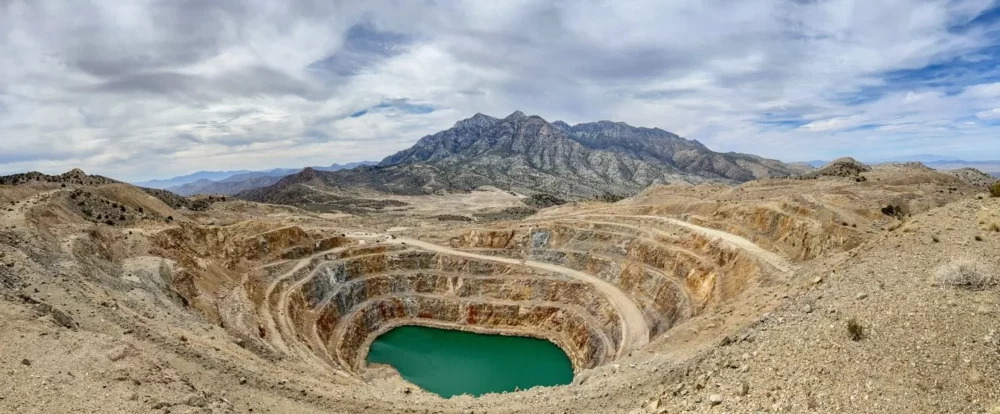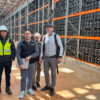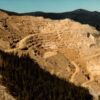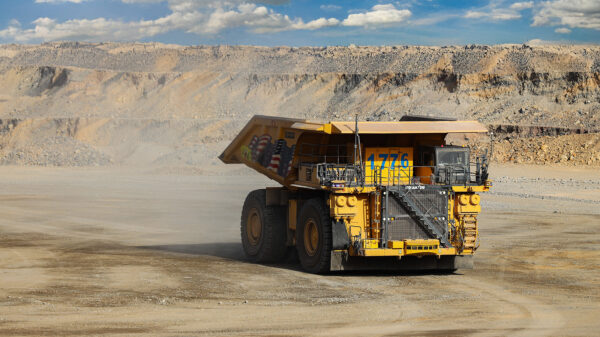Dateline Resources (ASX: DTR) (OTCMKTS: DTREF) started geotechnical sampling on its Colosseum gold-rare earth elements (REE) project in San Bernardino County, California.
The Australian explorer said on Friday that its field team is collecting 1,200 samples across the project area. It’s beginning with the highest priority zones featured by recent geological mapping and gravity survey reviews.
Dateline will send all samples for multi-element laboratory analysis, including the full suite of rare earth elements. The goal is to detect geochemical anomalies and pathfinder elements. These results will help generate detailed geochemical maps. They will also allow the team to prioritize zones with strong gold or REE potential for drilling.
While initial results could arrive as early as July, Dateline will wait for the full dataset before analyzing anything. This approach ensures consistency and avoids premature conclusions. Additionally, the team will carry out a magnetotelluric (MT) survey during the final stages of the soil program. This will help visualize geological structures beneath the Colosseum property.
Dateline may also use ground-based magnetic surveys to support and enhance the MT results.
“The last time this mine was in operation, the gold price was under $350/oz., and there was little incentive to do follow-up exploration work for hidden breccia pipes,” said Stephen Baghdadi, Dateline’s managing director.
“During that period, rare earth elements were not yet a focus, so the significant REE findings at Colosseum has only recently become important.”
Baghdadi noted that today’s environment differs sharply from the past, with gold prices hitting new highs and strategic demand for rare earth elements REEs rising. These market shifts make Dateline’s systematic field program at the Colosseum project especially timely and essential.
Read more: Promising antimony find in Nevada strongly positions NevGold Corp in minerals race
Read more: NevGold’s long intervals of antimony & gold mineralization turn heads
US operates just one producing REE mine
Exploration at Colosseum begins as both gold and REEs attract growing global interest. Gold remains a top-performing commodity in 2025. In mid-April, prices reached a new record of $3,500 per ounce. The metal typically performs well during times of uncertainty.
Additionally, rare earths have become a central issue in the ongoing US–China tariff war. China controls nearly all global REE supply and has used this dominance in trade negotiations. For decades, the US has depended heavily on Chinese REE imports.
Currently, the US operates just one producing REE mine—Mountain Pass in California—located only 10 kilometres south of Dateline’s Colosseum project. This proximity adds strategic value to the site.
The Colosseum property also has a long history of gold mining, dating back to the California Gold Rush. In the late 1980s, LAC Minerals of Canada mined 344,000 ounces of gold from two open pits before closing operations in 1993.
Since then, the site has seen minimal activity. Furthermore, its potential for rare earth production remains virtually untapped.
Dateline says its current exploration efforts are central to advancing the Colosseum project’s dual gold and REE potential. The company will use any promising anomalies or targets from the soil and magnetotelluric (MT) surveys to guide upcoming drilling plans.
Additionally, Dateline is finalizing an initial drilling program that will focus specifically on rare earth elements. The Colosseum project recently gained public backing from the US Department of the Interior, which views it as a potential second domestic source of rare earth elements.
Read more: NevGold closes its Nutmeg Mountain acquisition with Goldmining for $3 million
Read more: NevGold’s long intervals of antimony & gold mineralization turn heads
Colosseum project has no defined REE resources
Earlier this month, Interior Secretary Doug Burgum described the revival of the California-based project as a pivotal step in strengthening the nation’s critical mineral supply.
Dateline’s review of historical data led its team to conclude that Colosseum shares the same geological setting as the nearby Mountain Pass mine. Mountain Pass began production in 1952 and dominated global rare earth supply from the 1960s through the 1990s.
Currently, the Colosseum Project has no defined REE resources. However, it does host a JORC-2012-compliant gold resource of 1.1 million ounces, with roughly two-thirds classified as measured and indicated.
Additionally, a scoping study released in August 2024 outlined a projected mine life of more than eight years. The study anticipates average annual gold production of 75,000 ounces.
The United States faces growing challenges in securing a stable supply of critical minerals, which are essential for defense, clean energy, and advanced technologies.
Heavy reliance on imports, especially from China, exposes the country to geopolitical risks and trade disruptions. Domestic production remains limited, with only a few active rare earth mines. To strengthen supply chains, the U.S. is investing in exploration, processing infrastructure, and partnerships aimed at reducing foreign dependence and boosting resource independence.
The FAST-41 program streamlines federal permitting for critical mineral projects, including antimony, by accelerating reviews and boosting transparency.
It supports U.S. efforts to reduce reliance on foreign sources. NevGold Corp (CVE: NAU) (OTCMKTS: NAUFF) (FRA: 5E50) could benefit through its developing antimony-gold project in Nevada. Also, Perpetua Resources Corp. (NASDAQ: PPTA) (TSE: PPTA) stands to gain from its Stibnite project in Idaho, which already holds FAST-41 designation.
Additionally, both companies aim to strengthen domestic antimony supply chains.
.
NevGold Corp is a sponsor of Mugglehead news coverage
.














